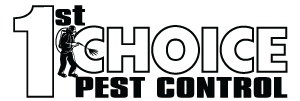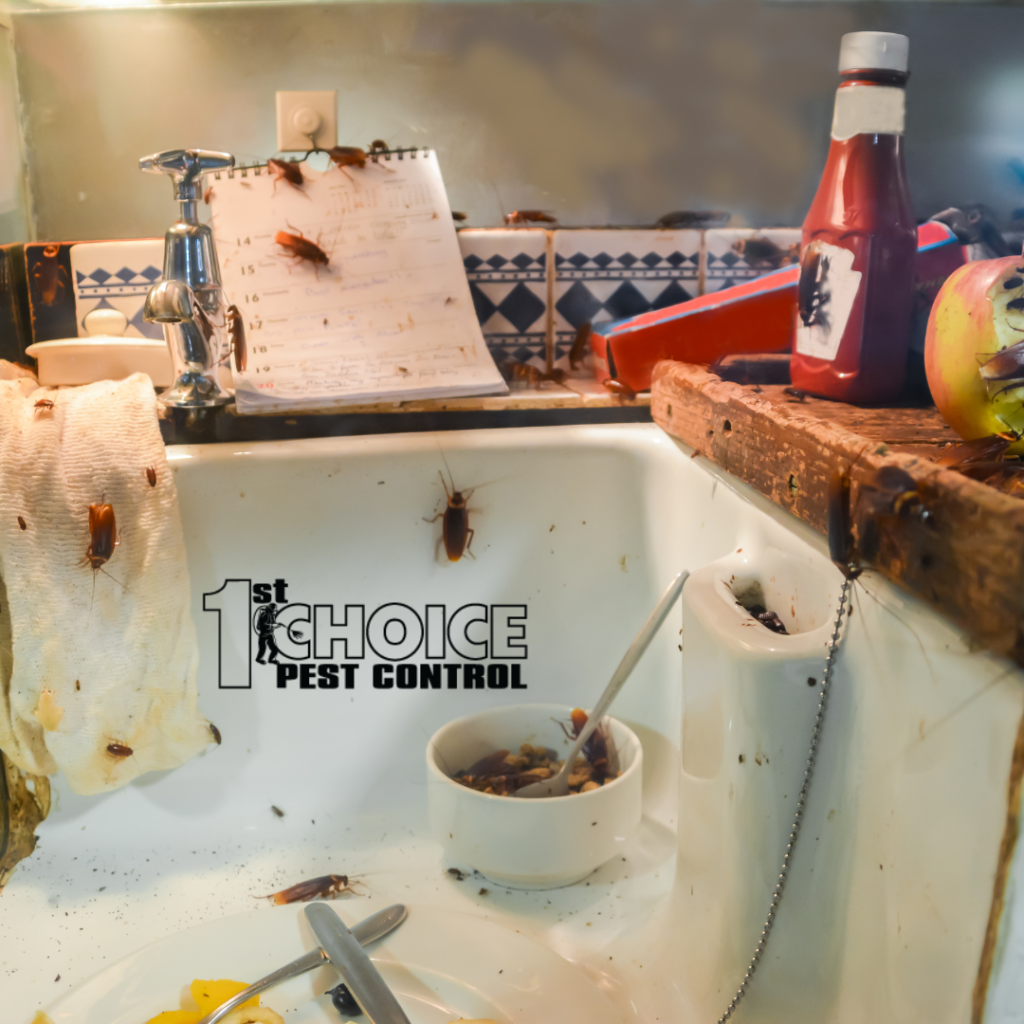Ensuring Security and Efficiency in Pest Management for Dining Establishments and Culinary Enterprises
Safe and Effective Pest Control for Restaurants and Food Businesses, maintaining a pristine and pest-free environment is more than a necessity – it’s a foundational element that ensures customer satisfaction, adheres to stringent health regulations, and safeguards the reputation of the establishment. This dynamic industry is particularly vulnerable to the challenges posed by pests, which can swiftly jeopardize not only the quality of food and service but also the business’s credibility.
This blog delves into the critical realm of pest control tailored specifically for restaurants and food businesses. With a focus on safety and efficacy, we aim to equip proprietors with insights and strategies to combat pests effectively while upholding the highest standards of food safety. Discover the intricate web of considerations that influence pest management in this industry and unlock the path to maintaining a secure and hygienic dining experience for patrons.
The Impact of Pest Infestations on Food Businesses
In the realm of food businesses, the impact of pest infestations extends far beyond the visible presence of unwanted intruders. Pests, ranging from rodents and insects to flies and stored product pests, possess the potential to wreak havoc on the reputation, operations, and legal compliance of restaurants and food establishments.
Reputation at Stake: A single pest sighting can shatter the meticulously crafted image of a restaurant. In the age of online reviews and social media, news of pest infestations can spread rapidly, tarnishing the reputation that businesses have worked tirelessly to build. Negative reviews and word-of-mouth experiences can deter both loyal customers and potential patrons, leading to decreased foot traffic and revenue loss.
Food Safety Compromised: Pests pose a direct threat to food safety. Contaminated surfaces, ingredients, and utensils can lead to foodborne illnesses and health violations. This not only endangers customers but also subjects businesses to regulatory fines and potential shutdowns. The consequences of compromising food safety are severe, extending beyond the immediate financial repercussions to encompass long-term damage to the establishment’s credibility.
Legal and Regulatory Issues: Health departments and regulatory agencies impose stringent guidelines on food businesses to ensure public safety. Failure to adhere to these regulations can result in hefty fines, legal actions, and even forced closures. Pests in the vicinity can serve as evidence of inadequate sanitation practices, triggering swift consequences that can irreversibly damage a business’s standing in the industry.
Financial Strain: Dealing with pest infestations often involves not just the cost of extermination but also the expenses incurred due to food disposal, property damage, and reputation repair. Additionally, businesses may experience downtime during pest control procedures, leading to further financial strain.
The Need for Vigilance: The multifaceted impact of pest infestations emphasizes the need for unwavering vigilance in pest management. Effective prevention and swift, targeted responses are essential to mitigate risks and maintain the integrity of the business. As we delve deeper into safe and effective pest control strategies tailored for restaurants and food establishments, the importance of proactive measures becomes even more evident.
By adopting a proactive approach, businesses can shield their operations, reputation, and customers from the detrimental effects of pests.
Common Pests in Food Businesses
Identifying the Culprits: Restaurants and food establishments provide an ideal environment for a variety of pests to thrive. Among the most common culprits are rodents, cockroaches, flies, and stored product pests.
Rodents: Rodents such as mice and rats are notorious for infiltrating food storage areas and contaminating supplies. Their ability to gnaw through packaging, spread diseases, and reproduce rapidly makes them a formidable adversary.
Cockroaches: These resilient insects are attracted to food remnants, warmth, and moisture. Cockroach infestations not only repulse customers but also pose a significant health risk, as they are carriers of pathogens that can cause food poisoning.
Flies: Flies are notorious for their ability to transmit diseases by landing on food and surfaces. Their presence can signal unsanitary conditions and lead to health code violations.
Stored Product Pests: These pests target dry goods such as grains, flours, and cereals. Beetles, weevils, and moths can infest stored products, rendering them unfit for consumption and resulting in financial losses.
Preventing Pest Intrusions: Understanding the behavior and attraction factors of these pests is the first step in prevention. Regular inspections, sealing entry points, and implementing proper sanitation practices can significantly reduce the risk of infestations. By staying vigilant and proactive, food businesses can thwart the efforts of these unwanted visitors.
Implementing a Comprehensive Pest Management Plan
Integrated Pest Management (IPM): The cornerstone of effective pest control for food businesses is the concept of integrated pest management (IPM). This approach emphasizes proactive prevention, regular monitoring, targeted treatment, and continuous evaluation.
Prevention: IPM starts with prevention strategies that minimize conducive conditions for pests. Proper food storage, waste management, and sealing entry points are essential components of prevention.
Monitoring: Regular inspections by trained professionals help detect early signs of pest activity. Monitoring devices such as traps and baits can provide valuable insights into the types and extent of pest infestations.
Identification: Identifying the specific pests is crucial for tailoring an appropriate response. Accurate identification informs the choice of treatment methods and ensures effective results.
Treatment: Targeted treatment methods are preferred to minimize the use of harmful chemicals. Eco-friendly alternatives like baits and traps can be used strategically to control pest populations without jeopardizing food safety.
Documentation: Keeping detailed records of pest sightings, treatments, and preventative measures is a crucial aspect of IPM. Documentation serves as a valuable resource for ongoing evaluation and regulatory compliance.
By adopting an IPM approach, restaurants and food businesses can create a comprehensive and sustainable pest management plan that addresses current infestations and prevents future ones.
Prevention Strategies for Food Businesses
Sanitation Excellence: A clean and well-maintained environment is the foundation of effective pest prevention. Regular cleaning of floors, surfaces, and equipment eliminates food residues that attract pests.
Sealing Entry Points: Pests can enter through even the tiniest gaps. Sealing cracks, crevices, and entry points prevents pests from infiltrating the premises.
Waste Management: Proper disposal of trash and waste minimizes food sources for pests. Secure garbage containers and regular disposal routines are essential.
Exterior Maintenance: The exterior of the establishment can also influence pest activity. Proper landscaping, regular maintenance of vegetation, and proper drainage help reduce pest attraction.
Staff Education: Ensuring that all staff members are educated about pest prevention is critical. Regular training empowers employees to identify and report potential issues promptly.
Regular Inspections: Conducting routine inspections by pest control professionals helps identify vulnerabilities and address them before infestations occur.
By adhering to these prevention strategies, food businesses create an environment that is less attractive to pests, reducing the likelihood of infestations and the subsequent challenges they bring.
Choosing Safe and Targeted Treatment Methods
Mindful Treatment Selection: In the pursuit of pest control, the safety of customers and employees is paramount. Opting for safe and targeted treatment methods ensures that the environment remains conducive to human health.
Baits and Traps: Baits and traps offer a targeted approach to pest control. These methods attract pests to a specific location, minimizing the risk of exposure to harmful chemicals.
Eco-Friendly Options: Some pest control companies offer eco-friendly alternatives that use natural ingredients or biological controls to manage pest populations.
Regular Monitoring: Consistent monitoring ensures that treatment methods are effective. If needed, adjustments can be made to prevent resistance or relapses.
Professional Expertise: Pest control professionals possess the knowledge and experience to select and apply treatments safely and effectively. Their expertise ensures minimal disruption to business operations.
Minimal Chemical Use: The use of harmful chemicals should be minimized, especially in food environments. When chemicals are used, they should be applied in a manner that prevents contamination of food and surfaces.
By prioritizing safe and targeted treatment methods, food businesses can address pest infestations effectively without compromising the health and safety of their patrons and employees.
Partnering with Professional Pest Control Services
Expertise and Experience: Collaborating with professional pest control services brings a wealth of expertise and experience to the table. These professionals understand the behaviors and habits of pests, allowing them to devise effective strategies.
Customized Solutions: Professional pest control services offer customized solutions tailored to the unique needs of each food establishment. Cookie-cutter approaches are replaced with strategies that address specific vulnerabilities.
Regular Inspections: Scheduled inspections by professionals help identify early signs of pest activity. This proactive approach prevents infestations from taking hold.
Documentation: Professional pest control services maintain detailed records of treatments, inspections, and recommendations. This documentation provides a historical record that informs future actions.
Emergency Response: In the event of unexpected pest infestations, professional services can provide rapid response and targeted treatments to mitigate the issue swiftly.
Collaboration: Effective pest control is a collaborative effort between the business owner, staff, and pest control professionals. By working together, food establishments create a pest-resistant environment that safeguards their operations.
Partnering with professional pest control services elevates the level of pest management and ensures that businesses are equipped to handle challenges effectively.
Compliance with Health Regulations
Health Regulations and Inspections: Food businesses are subject to strict health and safety regulations. Compliance with these regulations is crucial to avoid fines, penalties, and legal actions.
Pest-Related Violations: Pest infestations can result in health code violations. Health departments take pest sightings seriously and may impose penalties or closure orders.
A Clean Slate: Maintaining a pest-free environment ensures that businesses can pass health inspections with flying colors, allowing them to continue operations smoothly.
Customer Trust: Complying with health regulations builds trust among customers, who can dine with confidence, knowing that their well-being is a priority.
Staying Informed: Food businesses must stay updated on evolving health regulations and adjust their pest management strategies accordingly.
By prioritizing compliance with health regulations, food businesses not only adhere to legal requirements but also demonstrate a commitment to the well-being of their patrons and the quality of their offerings.
Educating and Engaging Staff
Creating a Pest-Aware Culture: Educating staff members about pest prevention fosters a culture of awareness and responsibility.
Identifying Early Signs: Staff members trained in pest identification can catch early signs of infestations, allowing for timely interventions.
Reporting Mechanisms: Establish clear channels for staff to report potential pest issues, ensuring swift action.
Routine Training: Regular training sessions keep staff updated on best practices and pest control protocols.
Ownership and Accountability: When staff takes ownership of pest prevention, the establishment becomes a collective force against infestations.
Incentivizing Participation: Recognize and reward staff members who contribute to pest prevention efforts, reinforcing the importance of their role.
Educated and engaged staff members act as the first line of defense against pests, enhancing the overall effectiveness of pest management strategies.
Conclusion
Maintaining a pest-free environment is not merely an option for restaurants and food businesses – it’s a non-negotiable aspect of their operation. The symbiotic relationship between effective pest control and the success of such establishments is evident in the myriad of challenges that pests can pose. From reputation damage to health violations, the consequences of neglecting pest management are far-reaching.
However, armed with knowledge, prevention strategies, and the expertise of professional pest control services, food businesses can establish an impregnable shield against pest intrusions. By adopting a proactive approach, complying with regulations, and fostering a pest-aware culture, restaurants and food establishments ensure that patrons experience not only delectable cuisine but also a safe and hygienic dining environment.
The path to culinary excellence is paved with meticulous pest management, and the journey begins with a resolute commitment to safeguarding food quality and customer satisfaction. At 1st Choice Pest Control, we stand ready to assist in this endeavor, offering tailored solutions that align with the unique needs of food businesses. Contact us today to embark on a pest-free journey that elevates your establishment to the pinnacle of excellence.



 Service Request
Service Request